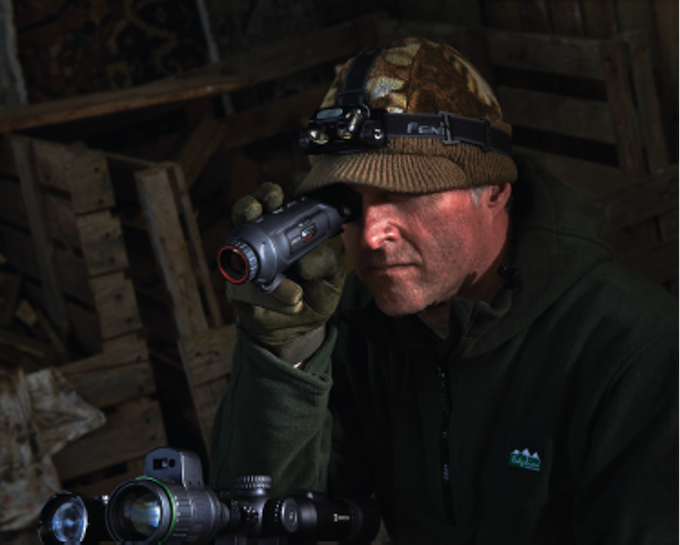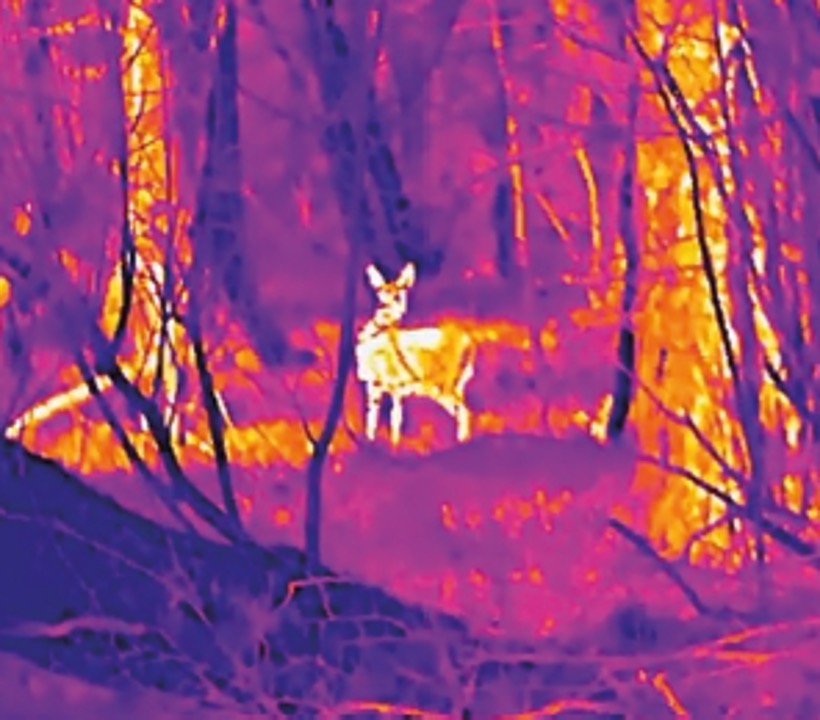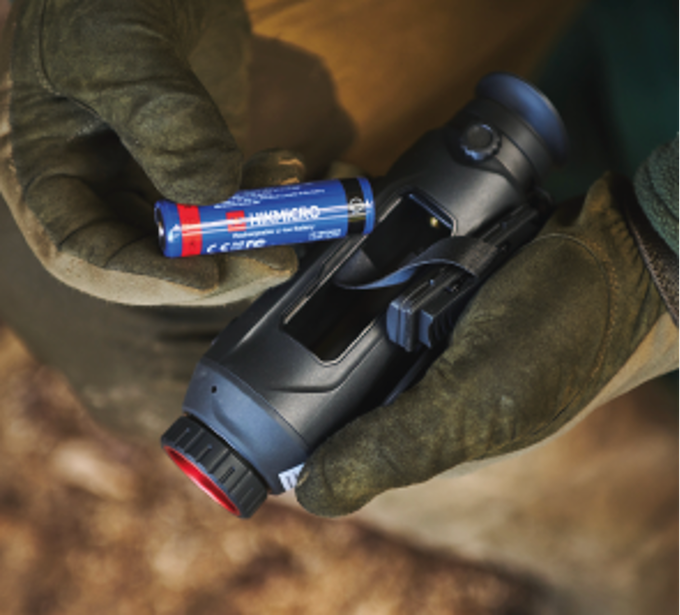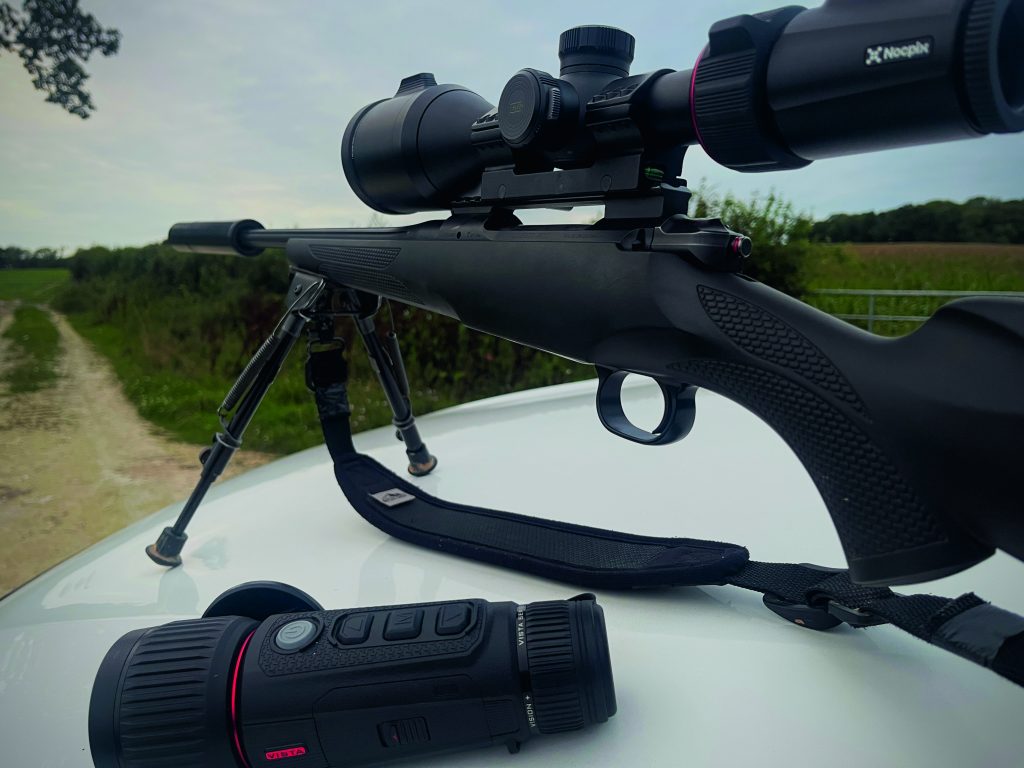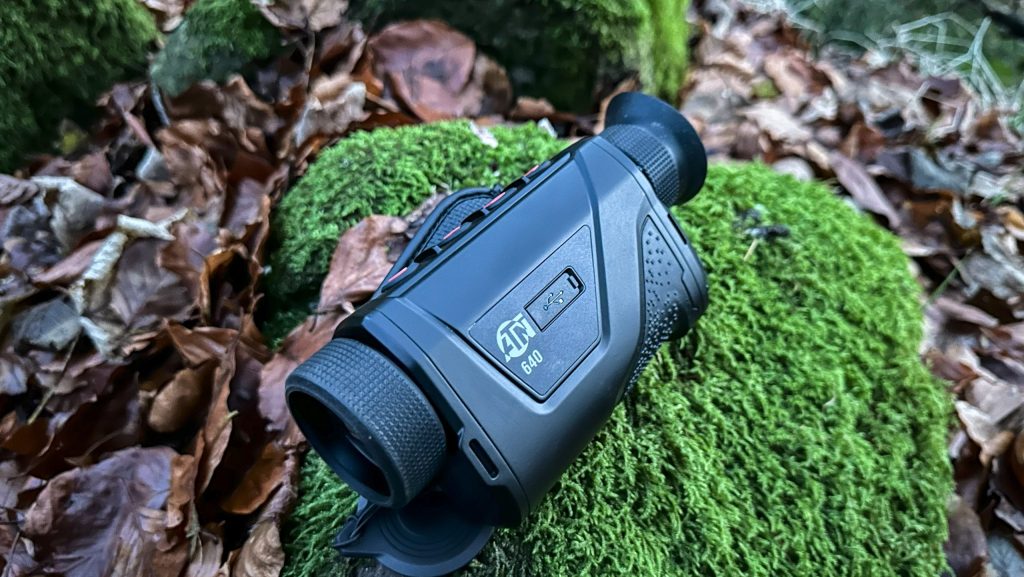The heat is on
Mat Manning gears up with the Hikmicro Lynx 2.0 thermal monocular as he targets garden-raiding rats under the cover of darkness.
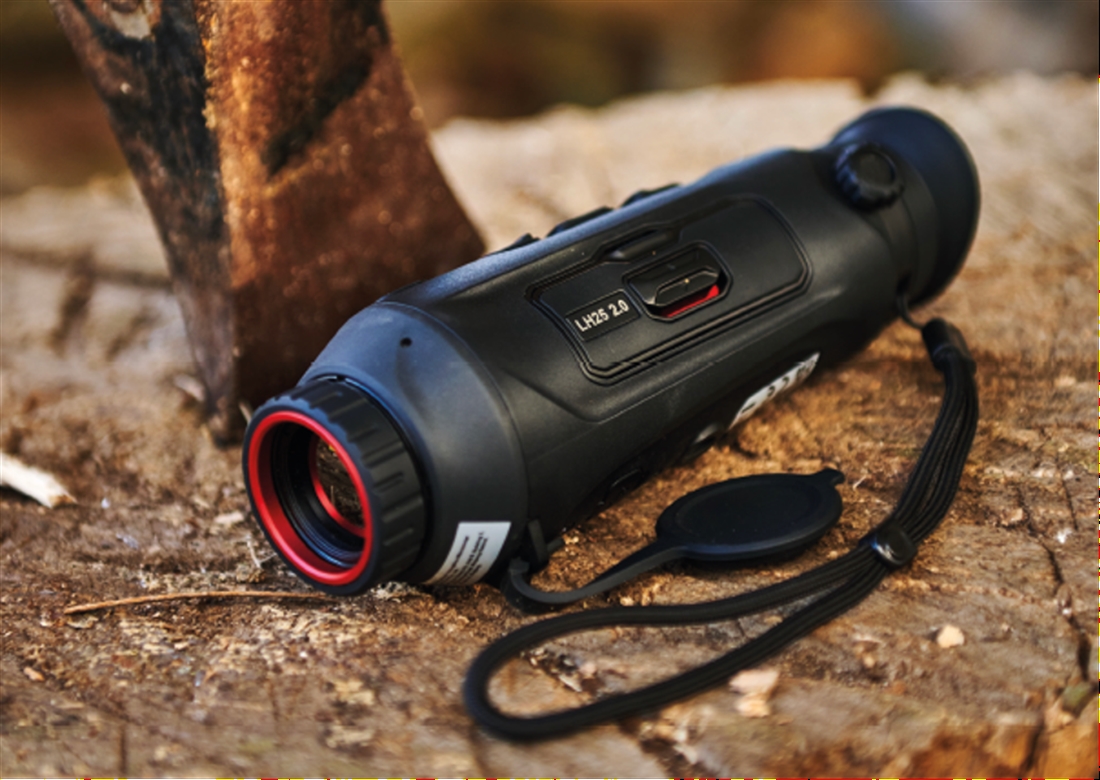
It wasn’t so long ago that I considered thermal spotters to be an expensive luxury and far from essential. Over the past couple of years, though, they have become a regular part of my everyday shooting kit and I would now feel at a serious disadvantage if I didn’t have one stashed in my jacket pocket when heading out on my nocturnal pest control rounds. And I must confess that they are also becoming an increasingly regular part of my daytime shooting kit.
My change of opinion can be attributed to several factors that have made these optics more attractive and more accessible. There is no denying that being able to spot your quarry’s heat signature – even when it is partially obscured by cover – is a huge advantage, but the real game changer for me is that these tools have become much easier to use and way more affordable. All these elements are exemplified by the Hikmicro Lynx 2.0 Thermal Monocular.
I have spent the past couple of months getting to grips with the LH25 variant of the Lynx 2.0. This model’s £1149.99 RRP still represents a substantial outlay, but that compares very favourably with the price of its rivals and you get a lot of performance for your money. This little thermal monocular has been built to stand up to proper field use and boasts a highly sensitive sub-20mK NETD thermal detector that makes for remarkably clear, layered viewing with plenty of detail of the landscape around your target – most important when working out safe shots.
The Lynx weighs about 300g, is less than 17cm long and has been designed to sit very comfortably in the palm of your hand. Those modest proportions mean it can easily be carried in a coat pocket. It has a 25mm f1.0 lens and a detection range of up to 1200m. Magnification shifts from 2.4-19.2x at the press of a button, giving you the ability to zoom right in for extra detail. Mostly, though, I tend to use spotters at their lowest magnification to achieve the widest possible field of view.
Battery life is an important consideration and the Lynx 2.0 has a stated continuous runtime of 6.5 hours – although that will diminish if you use its more advanced features such as wi-fi connectivity. Runtime is improved by a very clever auto screen-off that is activated by a sensor that detects the angle of the Lynx. You can also put it into sleep mode manually. Either way, it kicks back into action in less than three seconds. The power source is a replaceable/rechargeable 18650 battery that can easily be swapped in the field. There are two supplied and you can charge them on board or with the supplied charger.
This thermal spotter’s many features include cool and warm tone adjustment, picture-in-picture and hot-tracking modes. It has a 0.39″ OLED display and gives you a choice of white-hot, black-hot, red-hot and fusion colour palettes. It can record photos and video direct to its 16GB integral memory and also has wireless connectivity to your phone or tablet, so you can use the Hikmicro Sight app for watching back and sharing captured moments and also for quick, easy firmware updates.
Describing that array of clever bells and whistles is all very well, but the only way to find out if they make a real difference to your results is to get out and put them to the test. My opportunity to do this came in the shape of an unwelcome influx of rats in a friend’s garden. With the vermin offering a comparatively small target, and very often hiding among cover, some after-dark ratting seemed a great way to get the measure of the Lynx 2.0’s potential.
Snooping around my friend’s garden just as dusk was setting in, I saw several ratty excavations and some busy-looking runs passing through the flower beds. Expecting the rats to be reluctant to venture too far from cover, I placed small heaps of fine white breadcrumbs along the more exposed sections of the routes they were using in the hope of persuading them to pause and feed in places where I could get clear shots at them.
The rats appeared to be most active in two main areas; I was able to cover one from the shelter of a log store and the other from an old stone shed. With light showers forecast throughout the evening, I was glad to be able to shoot from sheltered spots and began by setting up my stool and tripod in the log store before loading up the magazine of my .177 calibre FX Dreamline Classic in readiness for the arrival of the rats.
My very first look through the Lynx 2.0 revealed two rats scuttling around among the cover of a large flower bed.
Even with vegetation in the way, the white-hot colour palette gave me a remarkably clear view of the pests and a quick turn of the front focusing dial brought them into sharp relief.
Rather than risk a miss by attempting to take a shot at a partially obscured target, I sat tight and waited for the rats to gain confidence. Sure enough, the lure of the breadcrumbs soon proved too great to resist and the view through the Lynx revealed a greedy rodent munching on one of my bait spots.
I tucked the Lynx 2.0 back into my pocket and lined up through my Alpex LRF 4K digital gunsight. At 15m this shot was a mere formality and the first rat of the night fell to a shot that caught it solidly in the head.
Fiddly controls can be a nightmare in the dark, so I was glad to find the Lynx 2.0’s buttons very easy to operate, even when wearing gloves.
The device comes supplied with a wrist strap, but I would have preferred a neck strap, which would have saved me from having to keep slipping it in and out of my pocket. That small niggle aside, I found it to be an excellent spotter and it unquestionably enabled me to clock rats that I would never have noticed through my infrared night vision riflescope.
The garden didn’t appear to be as overrun as I had expected and my night concluded with a tally of six rats. I am in no doubt that the Lynx 2.0 played a big part in that. And by enabling me to see the heat signatures of dead rats several hours after shooting them, it also proved a great help when clearing up at the end of the session.
I have since paid another visit to my friend’s garden – during which I managed to mop up a further four rats – and have also used the Lynx 2.0 for rabbit and grey squirrel control. I don’t do any deer shooting, but the device also made easy work of spotting these secretive animals hiding among the undergrowth while I was out searching for squirrels, and I am sure that it would be equally good for betraying the presence of wily foxes.
This versatile and extremely effective thermal monocular worked brilliantly at night and also by day, when I have known devices in the same price bracket struggle with the smaller heat difference between quarry species and their surroundings. If you’re after a compact thermal spotter, the Hikmicro Lynx 2.0 is well worth a look.
Also consider:
PULSAR TELOS XQ35
£1,929.95 thomasjacks.co.uk
This monocular is 224mm long and has a <25mK NETD thermal sensor and a 35mm f1.0 lens. It boasts a 1300m detection range and an 8.5 hour runtime from its LPS 7i rechargeable battery pack. Features include wireless connectivity and recording direct to 64GB integral memory.
PARD TA32-35
£1,164.99 sportsmanguncentre.co.uk
A competitively priced thermal monocular from the award-winning Pard brand, this unit has a <25mK NETD sensor and detection range of up to 2000m. Features include wi-fi connectivity, six colour palettes, and video and photo capture.
INFIRAY EYE II V2.0 E3
£1,599.99 highlandoutdoors.co.uk
This compact monocular is 180mm long and weighs 420g. Its <40mK NETD sensor gives clear viewing with a detection range out to 1300m. Features include 2.5-10x magnification, wi-fi connectivity, recording direct to 16GB integral memory and seven-hour runtime.
Related Articles
Get the latest news delivered direct to your door
Subscribe to Rifle Shooter
Elevate your shooting experience with a subscription to Rifle Shooter magazine, the UK’s premier publication for dedicated rifle enthusiasts.
Whether you’re a seasoned shot or new to the sport, Rifle Shooter delivers expert insights, in-depth gear reviews and invaluable techniques to enhance your skills. Each bi-monthly issue brings you the latest in deer stalking, foxing, long-range shooting, and international hunting adventures, all crafted by leading experts from Britain and around the world.
By subscribing, you’ll not only save on the retail price but also gain exclusive access to £2 million Public Liability Insurance, covering recreational and professional use of shotguns, rifles, and airguns.
Don’t miss out on the opportunity to join a community of passionate shooters and stay at the forefront of rifle technology and technique.



